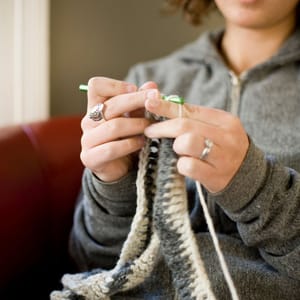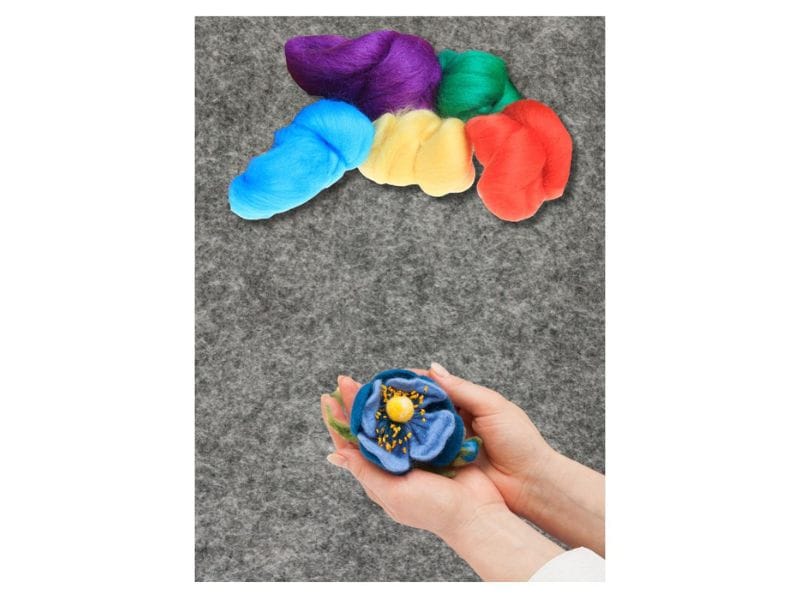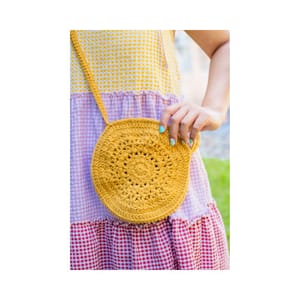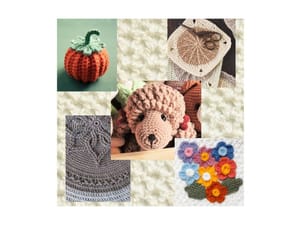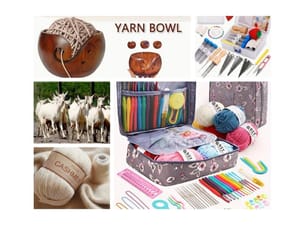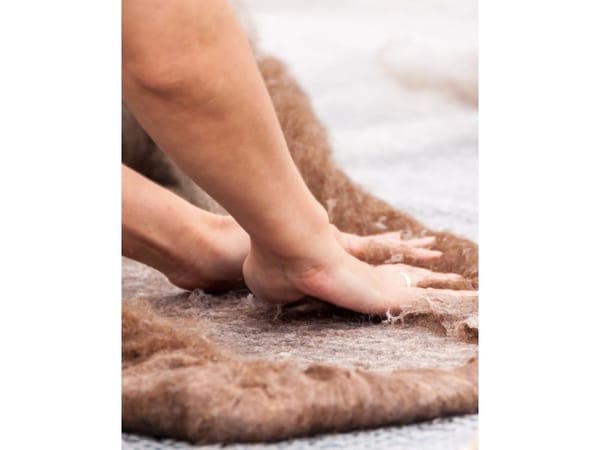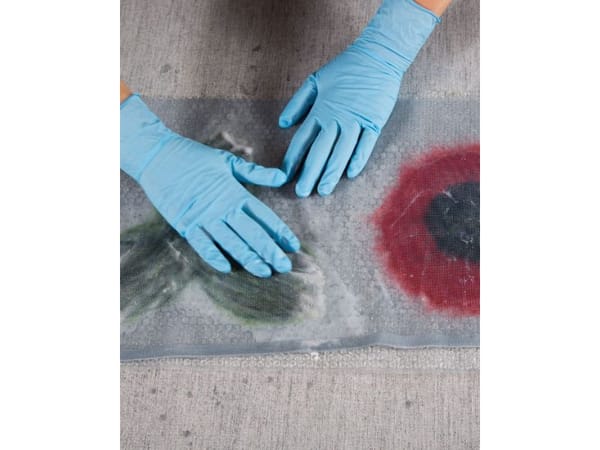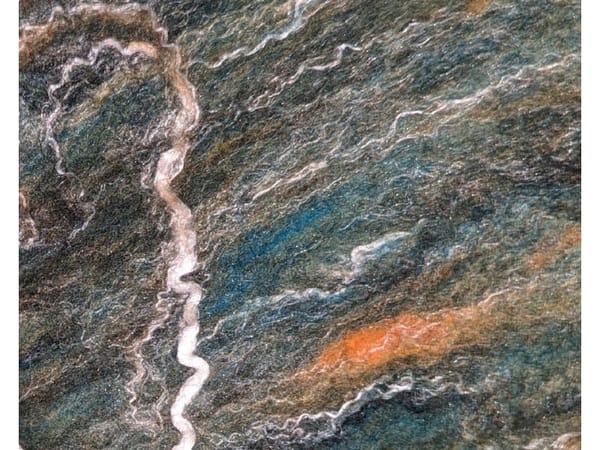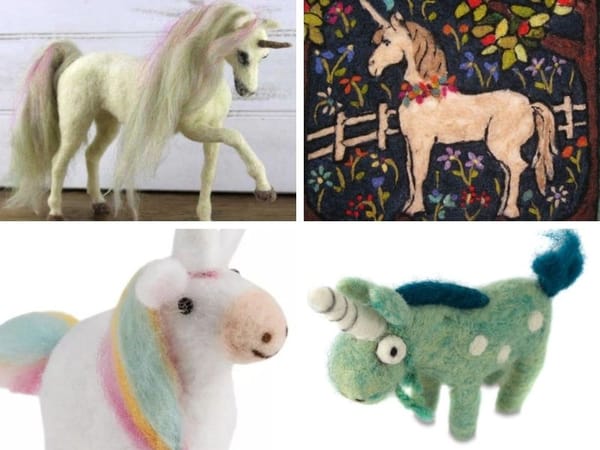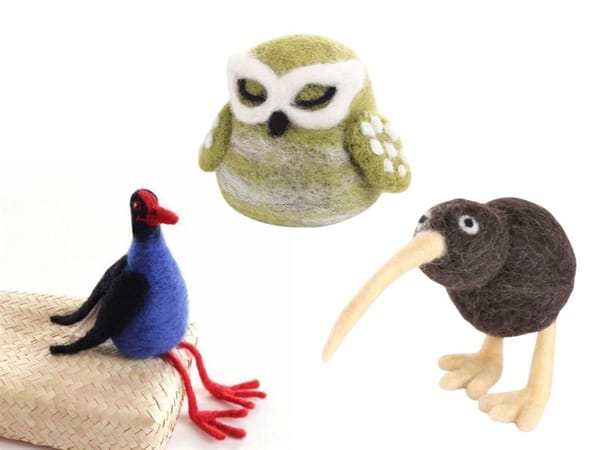Needle felting is an incredible craft that can be used to create just about any shape from wool fibers using a barbed needle.
Like most crafts, the materials and tools you use can make all of the difference in the final product.
A common question we get is, "Is it okay to use a wool pressing mat for needle felting?"
In this post we explore the when, where, and why of needle felting on wool pressing mats compared to traditional needle felting foam and other tables.
Key Takeaways:
- Wool pressing mats can be used as a needle felting mat and offer a sturdy and long-lasting surface.
- The wool density and natural fiber make it ideal for pressing and felting applications.
- Wool pressing mats offer an eco-friendly, multi-purpose pressing surface for many craft applications.
Basic Needle Felting
In needle felting, wool fibers are tacked together with a barbed needle to create a firm and compact material.
Because of the nature of the craft, it's important to have a sturdy and stable surface to work on - this is where mat selection comes into play.
The traditional surface is a needle felting foam pad, but there are now many crafters turning to wool pressing mats for needle felting.
Wool pressing mats are constructed of compressed wool fibers that create a solid and compact mat suitable for poking without wearing through.
This characteristic makes them a great replacement for a wool felting pad that can sometimes degrade over time.
Wool pressing mats are also eco-friendly and long lasting - a sustainable option for all crafters.
Wool Pressing Mats? Why Not?
Pressing mats are multi-purpose and offer many benefits over a traditional needle felting pad.
- The first and most obvious is the density. The compressed wool fibers create a sturdy surface that's perfect for needle felting and ensures your shapes keep their intended structure.
- The natural fiber is also ideal as a great pressing surface and and for felting applications. Wool is resistant to heat which means you can iron seams and press materials, then use the same mat to needle felt wool.
- The natural fibers also grip the wool fibers being felted which reduces slip and makes the process much more efficient.
Wool Pressing Mats vs. Needle Felting Foam
There are a few key differences to consider when comparing pressing mats to needle felting pad.
- A needle felting pad is light weight and offer a soft felt. They can sometimes degrade over time and do not always provide the same stability as a wool pressing mat.
In comparison, pressing mats are longer lasting and offer a solid surface. This is ideal for more detailed felting that requires stability and accuracy.
Pressing mats are also eco-friendly because they're made of natural fibers and can be composted when they reach the end of their useful life.
How Durable Are Wool Pressing Mats?
The most notable difference between wool pressing mats and foam pads is durability.
- Pressing mats will keep their shape and stability even after extensive use and needle pokes.
- Foam pads can sometimes degrade and lose stability over time which makes wool pressing mats the more economical choice for any crafter looking for a sturdy and long-lasting surface.
Because of the durability of pressing mats, they can also be used with a dry iron to press seams and other quilt projects.
This makes pressing mats a great multi-purpose surface for any sewing room.

Eco-Friendly and Sustainable
Pressing mats are also eco-friendly.
Constructed of natural wool fibers, these mats are biodegradable and can be composted when they reach the end of their useful life. This sustainable option replaces synthetic foam pads which can have a negative impact on the environment.
Pressing mats are also free of harmful dyes and chemicals which makes them an ideal option for any crafter concerned with the effects of their craft on the environment and their long-term health.
You can enjoy a high quality, durable, and stable surface for needle felting projects on an eco-friendly wool pressing mat.
Real Life Uses and Case Studies
To further explain the pros and cons of pressing mats for needle felting, we'll next turn to a few real life uses and case studies.
- Jane is one crafter who switched from a traditional foam pad to a pressing mat for needle felting projects. She says the wool pressing mat offers a much firmer surface which helps shape the wool fibers and produce a more accurate finished product.
- Tom is another crafter who uses a wool pressing mat for needle felting and to press seams in his quilting projects. He likes the versatility of only needing one mat to complete various craft tasks. Tom also notes that the wool pressing mat has lasted much longer than his previous foam pad which saves money over time.
Using a Wool Pressing Mat for Needle Felting
It's quite simple.
To use a pressing mat for needle felting, just place the mat on a flat and sturdy surface and get to work felting. The wool fibers create a stable surface so your needle can easily shape the wool fibers into whatever form you desire.
A few things to keep in mind when using a wool pressing mat.
First, be sure to check the thickness of your mat to make sure it offers a solid surface for your projects. The thicker mats offer more cushion between your project and the needle which helps prevent the needle from poking through the mat.
You can also place a towel or other protective layer to keep the mat clean and free of dust and debris.
The Science of Wool Felting Pads
The science of felting pads will take your needle felting to the next level.
Wool mats are made of densely packed fibers to form a solid yet soft surface. This special arrangement allows needles to easily poke into the mat without wearing through.
The fibers tangle around each other forming a compact surface to support even the most detailed of designs.
Next time you're working on a project, utilize the science of felting pads to produce accurate and long-lasting work. A felting pad is an important tool to have for any project involving this technique.
Wool felting pads are also friendly to the environment, which is an important aspect of modern crafting.
Synthetic felting pads contribute to pollution, but wool mats are biodegradable and renewable.
Many manufacturers utilize wool from sheep that are raised responsibly, adding to their green appeal. You can help the world by using this material in your craft, while enjoying a much better experience. Create a felted pillow or a complex sculpture with ease on these high-quality products.
Upgrade Your Needle Felting Experience with Wool Mats
Upgrade your needle felting experience with wool mats.
This craft requires a steady hand and sharp needle, which is why a solid and durable felting pad is essential.
The thick and tightly packed fibers on these mats allow you to pierce exactly where you intend to.
Needles can last much longer, provided you move the needle in the correct direction, keeping in mind that a pressing mat is denser than a wool felting pad which is softer.
You'll be able to use your needle felting pad for many projects, no matter the scale. From small ornaments to extensive attire, this method has applications that can be enjoyed by everyone.
No matter what you're looking to make, this surface will offer the support and stability necessary for great results.
Cleaning Your Wool Pressing Mat
Cleaning your wool mat is key to its performance and longevity.
- You should always clean your wool mat by brushing away any excess fibers and debris.
- You can also wash your wool mat with a gentle detergent in cold water if it becomes stained or dirty. Make sure to air dry completely before using.
Another way to keep your wool mat from smelling is to avoid excessive heat or steam.
While wool is naturally odor resistant, prolonged heat and moisture can cause it to smell badly. Follow these easy tips to maintain your wool mat for many years.
Selecting a Wool Pressing Mat
When selecting a wool mat as a needle felting pad, there are a few key factors to consider.
- First, double check the size, thickness, and density of the wool mat. Larger mats offer more space for larger projects and thick mats offer more cushion and stability.
- You should also check the density of the wool fibers as tighter mats will offer a firmer surface for needle felting.
- Next consider the quality of wool. New Zealand wool is widely regarded as some of the highest quality and most durable wool available.
- You should look for a wool mat that is made of 100% wool to ensure the best performance and life from your mat.
Economical and Long Lasting
Wool mats may cost more than foam pads, but they can offer a more economical solution for crafters in the long run.
A quality wool mat will last for many years and offers a sturdy and multi-purpose surface for various craft applications.
You can save money on unnecessary replacement pads and enjoy a durable and eco-friendly surface by choosing a wool mat for your next project.
Wool mats are an ideal option for any crafter looking to get the most from their craft tools and supplies.
Wool Pressing Mats and Quilting
These mats can also be used in quilting applications beyond needle felting.
The flat and firm surface of the mat is ideal for pressing seams and ironing fabric on quilts with a dry iron on the cotton setting (do not place the wool mat on a cutting mat). You can easily get your quilt blocks to lay flat and your seams to crisp up with this versatile surface.
The heat resistance of wool also allows you to use a dry iron and press your fabrics without damaging the mat.
Wool mats are a great addition to any quilters supply kit who needs a sturdy and multi-purpose surface for their next project.
Why Wool?
There are many advantages to using natural materials for your craft projects.
- Wool is a renewable resource which makes it eco-friendly for crafters concerned with the sustainability of their supplies.
- Wool is also free of harmful dyes and chemicals which makes it safe for your health and the environment.
- The natural qualities of wool also make it ideal for needle felting and pressing applications.
- Wool fibers grip the wool being felted which reduces slip and makes needle felting larger projects more effective.
- Heat resistance allows wool to be used with a dry iron to press fabrics and quilt blocks.
- Natural materials like wool offer crafters a versatile and reliable surface for any project.
Wrapping Up
In conclusion, wool pressing mats are incredibly versatile and great for the needle felting process.
They offer a sturdy and long-lasting surface that can be used time and time again.
The natural qualities of wool make it eco-friendly and versatile for many craft applications including needle felting, pressing seams, and ironing fabric.
You can enjoy a high quality, durable, and stable surface for all your craft projects by choosing a wool mat.

Is it okay to use a wool pressing mat for needle felting?
Yes. The compressed wool fibers create a solid and compact work surface suitable for poking. Wool mats are also eco-friendly and long lasting which makes them a sustainable option for all crafters.
How do you clean a wool pressing mat?
Clean your wool mat by brushing away any excess fibers and debris. You can also wash your mat with a gentle detergent in cold water if it becomes stained or dirty. Make sure to air dry completely before using. Avoid excessive heat or steam to keep it from smelling badly.
What is the advantage of using a wool pressing mat for needle felting?
The advantage of using a wool mat for needle felting is it's firm and sturdy surface, eco-friendly nature, and versatility. Wool mats offer a stable and long-lasting surface for needle felting which ensures your shapes keep their intended structure. They are also heat resistant and can be used to press seams and iron fabric. It is not recommended to use a wool mat on top of a cutting mat.

Images Source: Canva

